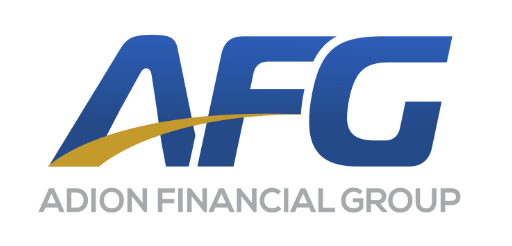
Top 3 Recommended Policies
For painting contractors in Connecticut, understanding the nuances of insurance is crucial. This guide aims to provide comprehensive insights into the various types of insurance available to painting contractors, the legal requirements in Connecticut, and tips for choosing the right coverage.
Understanding the Importance of Insurance for Painting Contractors
Insurance is not just a legal requirement; it is a critical component of running a successful painting business. It protects contractors from financial loss due to accidents, damages, or lawsuits. Without adequate insurance, a single incident can jeopardize the entire business.
Moreover, clients often require proof of insurance before hiring a contractor. Having the right coverage not only builds trust with potential clients but also enhances the contractor's reputation in the industry. A well-insured contractor demonstrates professionalism and a commitment to safety, which can be a deciding factor for clients when choosing between multiple bids.
Types of Insurance Coverage
There are several types of insurance coverage that painting contractors should consider. Each type serves a specific purpose and addresses different risks associated with the painting profession. Understanding these various types can help contractors make informed decisions about their insurance needs, ensuring they are adequately protected against unforeseen circumstances.
General Liability Insurance
general liability insurance is essential for any contractor. It covers claims related to bodily injury, property damage, and personal injury that may occur during the course of work. For example, if a client trips over equipment and gets injured, this insurance would help cover medical expenses and legal fees. Additionally, general liability insurance can also protect against claims arising from advertising injuries, such as copyright infringement or defamation, which can be particularly relevant for contractors who promote their services online.
Workers' Compensation Insurance
In Connecticut, workers' compensation insurance is mandatory for businesses with employees. This coverage provides benefits to workers who are injured on the job, including medical expenses and lost wages. It protects both the employee and the employer from potential lawsuits related to workplace injuries. Furthermore, having workers' compensation insurance can improve employee morale, as workers feel more secure knowing they are protected in case of an accident. This can lead to higher productivity and lower turnover rates, ultimately benefiting the business in the long run.
Commercial Auto Insurance
For painting contractors who use vehicles for business purposes, commercial auto insurance is necessary. This coverage protects against accidents that occur while driving for work, covering vehicle damage and liability for injuries to others. It is particularly important for contractors who transport tools, equipment, and materials to job sites, as personal auto insurance may not cover incidents that occur during business-related travel. Additionally, commercial auto insurance can offer coverage for theft or damage to the vehicle itself, ensuring that contractors can quickly get back to work after an incident without facing significant financial setbacks.

Legal Requirements for Painting Contractors in Connecticut
Connecticut has specific legal requirements that painting contractors must adhere to regarding insurance. Understanding these requirements is essential for compliance and to avoid penalties.
State Regulations
According to Connecticut law, all contractors must carry general liability insurance. The minimum coverage amount is typically set at $1 million. Additionally, contractors are required to provide proof of insurance to clients upon request. This proof not only protects the contractor but also reassures clients that they are hiring a professional who is financially responsible and capable of handling any potential mishaps that may occur during the job. Furthermore, it is advisable for contractors to stay updated on any changes to these regulations, as the state may periodically revise insurance requirements to reflect the evolving nature of the industry.
Licensing and Insurance
To operate legally in Connecticut, painting contractors must obtain a contractor's license. Part of the licensing process includes demonstrating that the contractor has the necessary insurance coverage. This requirement helps ensure that only qualified and insured professionals are providing services to the public. In addition to general liability insurance, contractors may also consider obtaining workers' compensation insurance, which is crucial if they employ others. This type of insurance protects both the contractor and their employees in the event of workplace injuries. Moreover, contractors should be aware that maintaining their license requires ongoing education and adherence to safety regulations, which can further enhance their credibility and reputation in the industry.
Choosing the Right Insurance Provider
Selecting the right insurance provider is a critical step in securing coverage that meets the needs of a painting business. Not all insurance companies offer the same level of service or coverage options. The right provider can not only protect your assets but also provide peace of mind, allowing you to focus on your craft without the constant worry of unforeseen liabilities.
Researching Insurance Companies
When searching for an insurance provider, it is essential to conduct thorough research. Look for companies that specialize in contractor insurance and have a good reputation in the industry. Online reviews, testimonials, and recommendations from other contractors can provide valuable insights into the reliability of an insurance company. Additionally, consider checking their financial stability through ratings from agencies like A.M. Best or Standard & Poor's, as this can indicate their ability to pay claims when needed. Engaging in conversations with peers in the painting industry can also yield recommendations for providers who understand the unique risks associated with your work.
Comparing Quotes
Once potential providers have been identified, obtaining quotes is the next step. It is advisable to request quotes from multiple companies to compare coverage options and pricing. Be sure to ask about any discounts that may be available for bundling policies or having a clean claims history. Furthermore, pay attention to the specifics of each policy, such as coverage limits, deductibles, and exclusions. Some providers may offer additional services, such as risk management resources or claims support, which can be invaluable in the event of an incident. Understanding the fine print can help ensure that you are not only getting the best price but also the best protection tailored to your business needs.
Cost of Insurance for Painting Contractors
The cost of insurance for painting contractors can vary significantly based on several factors, including the size of the business, the number of employees, and the types of coverage selected. Understanding these factors can help contractors budget for their insurance needs.
Factors Influencing Insurance Costs
Several elements can influence the cost of insurance premiums. These include the contractor's claims history, the type of work performed, and the location of the business. For instance, contractors who have a history of frequent claims may face higher premiums. Additionally, specialized services, such as industrial painting or working with hazardous materials, can also lead to increased costs due to the higher risk associated with these jobs. Furthermore, the geographic area in which a contractor operates plays a crucial role; regions with higher rates of accidents or lawsuits can expect to see elevated insurance costs.
Average Premiums
On average, painting contractors in Connecticut can expect to pay anywhere from $500 to $2,500 annually for general liability insurance. Workers' compensation insurance costs can range from $1,000 to $3,000, depending on the number of employees and the risk associated with the work performed. It's important to note that these premiums can also be influenced by the contractor's safety record and the implementation of safety protocols. Contractors who invest in training and safety measures may qualify for discounts, thereby reducing their overall insurance costs.
Types of Insurance Coverage
In addition to general liability and workers' compensation, painting contractors may consider other types of insurance coverage to protect their business. Professional liability insurance, for example, can safeguard against claims of negligence or failure to deliver services as promised. This is particularly relevant for contractors who provide consultations or design services. Additionally, equipment insurance can protect valuable tools and machinery from theft or damage, which can be a significant financial burden if not covered. By understanding the full spectrum of available insurance options, contractors can tailor their policies to best suit their specific needs and risks.
Importance of Comparing Quotes
When seeking insurance, it's essential for painting contractors to compare quotes from multiple providers. Each insurance company may assess risk differently, leading to variations in premium rates. By obtaining several quotes, contractors can ensure they are getting the best coverage for their budget. Moreover, working with an insurance broker who specializes in contractor insurance can provide valuable insights and help navigate the complexities of policy options, ensuring that contractors are adequately protected without overspending.

Common Exclusions in Painting Contractors Insurance
While insurance provides essential coverage, it is important to be aware of common exclusions that may apply. Understanding what is not covered can prevent surprises when filing a claim.
Excluded Activities
Many insurance policies have exclusions for certain activities. For example, damage caused by improper workmanship or the use of defective materials may not be covered. Additionally, intentional acts or illegal activities are typically excluded from coverage. This means that if a contractor knowingly uses subpar materials or engages in fraudulent practices, they may find themselves without support when a claim arises. It's crucial for contractors to maintain high standards of quality and integrity in their work to avoid these pitfalls.
Limitations on Coverage
Some policies may have limitations on coverage amounts for specific types of claims. For instance, there may be caps on the amount paid for property damage or bodily injury claims. Contractors should carefully review their policies to understand these limitations. Furthermore, certain types of damages, such as those resulting from natural disasters or wear and tear, may also be excluded. This highlights the importance of assessing the specific needs of a painting business and seeking additional endorsements or riders that can provide broader coverage for unique risks associated with their operations.
Exclusions Related to Equipment and Tools
In addition to the exclusions mentioned, many painting contractors insurance policies may also exclude coverage for equipment and tools. This can include damage to ladders, sprayers, and other essential tools of the trade. Contractors should consider obtaining separate coverage for their equipment, as losses can quickly add up if tools are stolen or damaged on the job. Furthermore, maintaining an inventory of tools and equipment, along with their respective values, can help in securing the right amount of coverage and ensuring that claims are processed smoothly.
Environmental and Health Hazards
Another critical area of exclusion pertains to environmental and health hazards. Many standard policies do not cover claims related to exposure to hazardous materials, such as lead paint or asbestos, which may be encountered during renovation projects. This is particularly relevant for older buildings, where these materials may still be present. Contractors should be proactive in obtaining specialized environmental insurance or endorsements that address these risks, ensuring they are protected against potential liabilities that could arise from health-related claims. This not only safeguards the contractor but also promotes a safer working environment for employees and clients alike.
Tips for Managing Insurance Claims
Filing an insurance claim can be a daunting process, but knowing how to manage it effectively can make a significant difference. Here are some tips for navigating the claims process.
Document Everything
Thorough documentation is crucial when filing a claim. This includes taking photographs of damages, keeping records of communications with clients, and maintaining detailed notes of the incident. Comprehensive documentation can help support the claim and expedite the process. Additionally, consider creating a timeline of events related to the incident, as this can provide clarity and context that may be beneficial during the review of your claim. The more organized and detailed your documentation is, the stronger your case will be when it comes time for the insurance adjuster to evaluate your claim.
Communicate with Your Insurance Provider
Maintaining open lines of communication with the insurance provider is essential. Notify the insurer of the claim as soon as possible and provide all necessary information. Prompt communication can help ensure that the claim is processed efficiently. It's also wise to keep a record of all interactions, including dates, times, and the names of representatives you speak with. This not only helps track the progress of your claim but also serves as a reference in case any discrepancies arise later. Remember, being proactive in your communication can often lead to quicker resolutions and a smoother claims experience.
Understand Your Policy
Before filing a claim, take the time to thoroughly review your insurance policy. Understanding the coverage limits, deductibles, and specific terms related to your claim can help set realistic expectations. Familiarizing yourself with the nuances of your policy can also empower you to ask informed questions and advocate effectively for your needs. If there are terms or conditions that are unclear, don't hesitate to reach out to your insurance agent for clarification. This knowledge can be invaluable in ensuring that you receive the full benefits entitled to you under your policy.
Stay Organized
Keeping all your claim-related documents in one organized location can save you time and stress. Create a dedicated folder—whether physical or digital—where you can store all correspondence, receipts, and notes related to your claim. This organization will not only help you stay on top of deadlines but will also make it easier to provide any additional information your insurance company may request. By staying organized, you can approach the claims process with confidence, knowing that you have all the necessary materials at your fingertips.
In addition to the standard insurance options, painting contractors may want to consider additional coverage to further protect their business. These options can provide peace of mind and additional security.
Professional Liability Insurance
Professional liability insurance, also known as errors and omissions insurance, protects contractors against claims of negligence or inadequate work. This coverage is particularly important for contractors who provide design services or consultations.
Equipment and Tool Insurance
Painting contractors rely on various tools and equipment to perform their jobs. Equipment and tool insurance covers the loss or damage of these items, ensuring that contractors can quickly replace essential tools without incurring significant out-of-pocket expenses.
Conclusion
In conclusion, understanding and securing the right insurance coverage is vital for painting contractors in Connecticut. With various types of insurance available, legal requirements to adhere to, and the importance of choosing the right provider, contractors must be proactive in protecting their businesses.
By taking the time to research, compare options, and understand the nuances of insurance, painting contractors can ensure they are adequately covered against potential risks. This not only safeguards the business but also builds trust with clients and enhances the contractor's professional reputation.
Contact Us
Phone
Locations
Connecticut Location
703 Hebron Ave., 3rd Floor, Glastonbury, CT 06033
North Carolina Location
436 East 36th St., Charlotte, NC 28205


